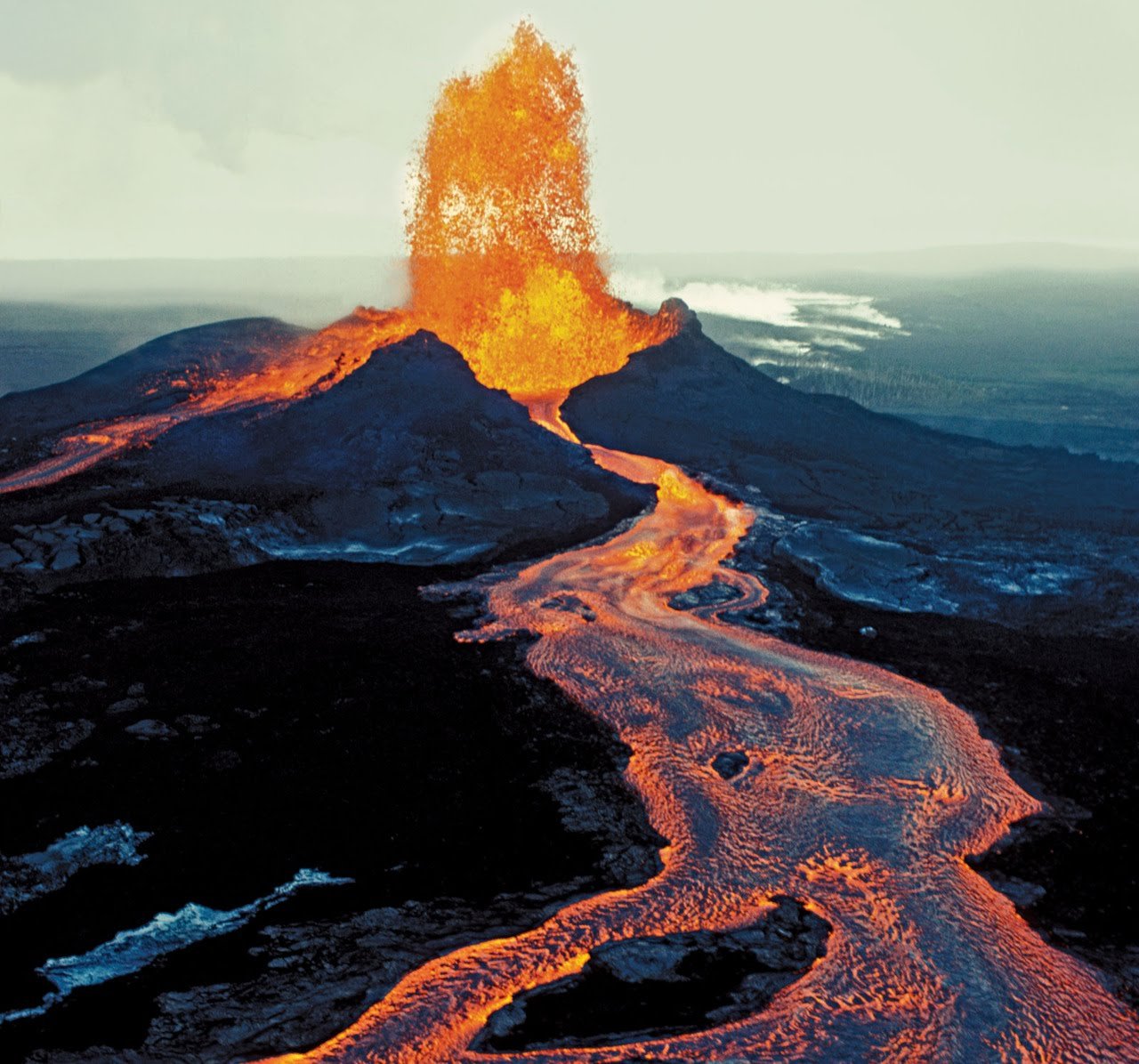
.jpg)
Mauna Loa probably began erupting between 700,000 and 1,000,000 years ago and has grown steadily since then. Very low temperatures mean that precipitation often occurs in the form of snow, and the summit of Mauna Loa is described as a periglacial region, where freezing and thawing play a significant role in shaping the landscape. At higher elevations, the amount of precipitation decreases, and skies are very often clear. The western (leeward) side has a much drier climate. The rainfall supports extensive forestation. At low elevations, the eastern (windward) side of the volcano receives heavy rain, and the city of Hilo is the wettest in the United States. Trade winds blow from east to west across the Hawaiian islands, and the presence of Mauna Loa strongly affects the local climate. Seismic shadows reveal a magma chamber about 1.75 miles (3 km) beneath the summit and smaller magma bodies beneath the rift zones. Some types of seismic waves, known as " S-waves," cannot travel through liquid rock, so magma chambers cast 'shadows' in seismic data. Seismic data can reveal the locations of the magma chambers beneath the volcano which feed activity. The caldera probably formed 1,000–1,500 years ago when a very large eruption from the northeast rift zone emptied out the shallow magma chamber beneath the summit, which then collapsed. Its summit caldera is called Mokuaweoweo it is 1.75 to 3 miles (3–5 km) in diameter.
/hawaii--big-island--hawaii-volcanoes-national-park--mauna-loa-eruption--lava-flowing--steam-rising--126940483-59a8314ad088c0001184d62a.jpg)
The remaining 6% have occurred from vents to the northwest of the summit, away from the rift zones. About 38% of eruptions in the last two hundred years have occurred at the summit, 31% in the northeast rift zone, and 25% in the southwest rift zone.

Įruptions generally occur in three regions on the mountain: at the summit and in two rift zones extending northeast and southwest of the summit. Typically, at the start of an eruption, a rift up to several kilometers long opens, with lava fountains occurring along its length in a so-called "curtain of fire." After a few days, activity normally becomes concentrated at one vent. Eruptions are rarely violent, and the most common form is in the Hawaiian style, which involves lava fountains feeding lava flows. Mauna Loa is shaped like a shield, because its lava is extremely fluid (it has low viscosity), and its slopes are not steep. Mauna Loa is the world's largest shield volcano. Hawaii Volcanoes National Park covers the summit and the southeastern flank of the volcano, including a separate volcano, Kīlauea. Observations of the atmosphere are undertaken at the Mauna Loa Observatory, and of the Sun at the Mauna Loa Solar Observatory, both located near its summit. Mauna Loa has been intensively monitored by the Hawaiian Volcano Observatory (HVO) since 1912. In view of the hazards it poses to population centers, Mauna Loa is part of the Decade Volcanoes program, which encourages studies of the most dangerous volcanoes. No recent eruptions of the volcano have caused fatalities, but eruptions in 19 destroyed villages, and the city of Hilo is partly built on lava flows from the late nineteenth century. Mauna Loa's most recent eruption occurred from March 24 1984, to April 15 1984. The slow drift of the Pacific Plate will eventually carry the volcano away from the hotspot, and the volcano will thus become extinct within 500,000 to one million years from now. Its magma comes from the Hawaii hotspot, which has been responsible for the creation of the Hawaiian island chain for tens of millions of years. The volcano has probably been erupting for at least 700,000 years and may have emerged above sea level about 400,000 years ago, although the oldest-known dated rocks do not extend beyond 200,000 years. Mauna Kea is slightly higher, by several hundred feet, at 13,500 feet abo The Lava eruptions from Mauna Loa are silica-poor, thus very fluid: and as a result eruptions tend to be non-explosive and the volcano has extremely shallow slopes. The Hawaiian name "Mauna Loa" means "Long Mountain". It is an active shield volcano, with a volume estimated at approximately 18,000 cubic miles (75,000 km³), although its peak is about Template:Convert/ft lower than that of its neighbor, Mauna Kea.

Mauna Loa is the largest volcano on earth and one of five volcanoes that form the Island of Hawaii in the U.S.


 0 kommentar(er)
0 kommentar(er)
